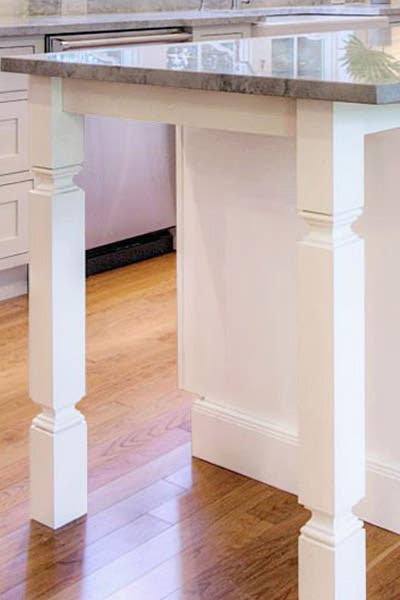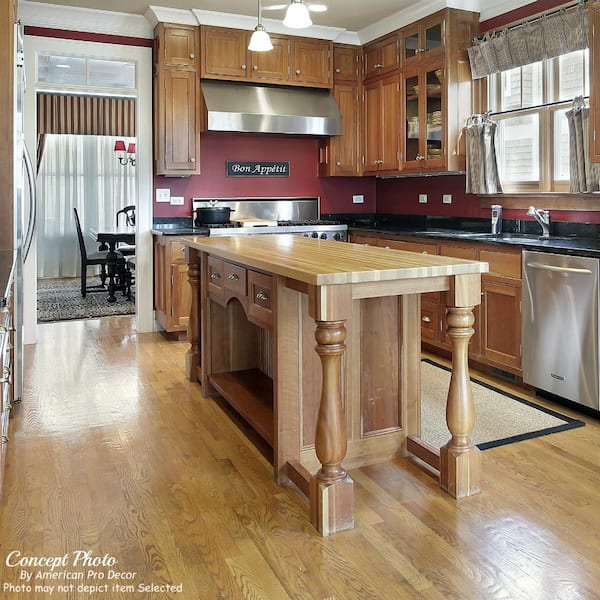Discover Sturdy and Decorative Legs For Kitchen Island Makeovers
Discover Sturdy and Decorative Legs For Kitchen Island Makeovers
Blog Article
Necessary Variables to Take Into Consideration When Choosing Legs For Cooking Area Island
Choosing the ideal legs for a kitchen area island entails a careful assessment of several variables that can substantially influence both performance and visual charm. Amongst these, the choice of product plays an essential duty in guaranteeing toughness, while the style must complement the existing decoration. Considerations such as elevation and weight support are essential for stability and comfort. As we explore these elements, it ends up being clear that each choice can have significant ramifications for the total cooking area experience. What nuances should be thought about in each of these classifications to accomplish the optimal equilibrium?
Material Options
When picking legs for a kitchen area island, comprehending the different product choices is important for accomplishing both visual charm and structural honesty (Legs For Kitchen Island). The choice of material significantly affects not just the toughness of the island but also its overall layout and capability
Metal legs, commonly made from stainless steel or functioned iron, contribute a commercial and modern-day feeling while guaranteeing durability and security. These materials are immune to wear and can support considerable weight, making them perfect for bigger islands.
Another option is engineered materials, like MDF or plywood, which can be extra cost-effective while still offering an array of surfaces. They may not provide the same level of security as strong wood or steel. Legs For Kitchen Island. Materials such as acrylic or glass can develop a contemporary look, though they may need extra assistance to ensure security.
Ultimately, the selection of product for kitchen island legs must line up with the wanted performance and the general theme of the kitchen.
Style and Layout

When taking into consideration style, the shape and finish of the legs are crucial. Conical legs can offer a sense of lightness and sophistication, while thicker, extra durable legs can communicate stamina and security. Additionally, the finish-- be it repainted, stained, or all-natural-- must complement the cabinets and kitchen counter materials to produce a unified look.
Moreover, the layout of the legs can likewise mirror individual taste. Custom-made or ornamental legs, such as those including complex carvings or one-of-a-kind geometric shapes, can act as focal factors, including character and individuality to the kitchen area. Ultimately, the ideal choice will certainly not only improve performance but also elevate the aesthetic charm, making the kitchen area island a standout function of the home.
Elevation Factors To Consider
Picking the appropriate height for kitchen island legs is vital, as it directly affects both performance and comfort. The basic height for a kitchen island usually varies from 36 to 42 inches, aligning with usual kitchen counter heights.

It is also necessary to make up individuals' elevations and preferences. Tailoring the height can make sure a comfortable experience for all relative, making the kitchen area island a more enjoyable and useful space.
Weight Support
Making sure adequate weight support for kitchen area island legs is vital for both security and performance. The kitchen island often serves numerous objectives, consisting of food prep work, eating, and additional storage, requiring a durable support framework. When choosing legs, it is critical to think about the total weight ability called for based upon the island's planned use and the materials that will be put on it.
The choice of material for the legs plays a substantial function in their weight-bearing capabilities. Solid wood, steel, and sturdy composites generally offer superior toughness compared to lighter materials. Furthermore, the layout of the legs-- whether they are straight, try this out tapered, or have a pedestal form-- can affect their capability to distribute weight effectively across the framework.
Additionally, the leg placement ought to be strategically intended to boost security. Legs placed at the edges or with a larger base can much better sustain much heavier loads. Always seek advice from the producer's specs pertaining to load restrictions to guarantee that the legs can maintain the desired weight without jeopardizing safety. In recap, selecting kitchen island legs with sufficient weight assistance is crucial for creating a useful and secure cooking space.
Installment and Upkeep
Correct installment and maintenance of kitchen island legs are vital for making certain long life and security. To begin, it is important to comply with the producer's standards during installment. This often involves safeguarding the legs to the island base making use of suitable bolts, making sure that the legs are level and straightened. Utilizing a level tool can assist avoid tottering and boost the overall aesthetic appeal of the kitchen island.
Once mounted, regular upkeep is essential to preserve the honesty and look of the legs - Legs For Kitchen Island. For wooden legs, regular cleansing with a wet fabric and application of suitable wood polish can protect against wetness damage and maintain their surface. Steel legs may require a mild cleaning option to remove oil and gunk, adhered to by a completely dry towel to stop rust development
Furthermore, evaluate the legs frequently for signs of wear or damages, such as cracks or loosened joints. Tightening up screws or bolts as required can likewise prolong the lifespan of the legs. By sticking to these installation and upkeep techniques, property owners can make certain that their kitchen island remains strong and aesthetically appealing for many years to come.
Final Thought

Aesthetic comprehensibility is paramount in choosing the design and layout of legs for a kitchen area island, as these elements considerably influence the total ambiance of the area. Tapered legs can offer a sense of agility and style, while thicker, a lot more durable legs can convey pop over to these guys toughness and linked here stability.Picking the proper elevation for kitchen area island legs is vital, as it straight impacts both functionality and comfort. In summary, picking kitchen island legs with appropriate weight assistance is crucial for producing a practical and safe culinary area.
In final thought, picking legs for a kitchen area island requires cautious consideration of numerous variables, consisting of material options, style, elevation, weight support, and installment.
Report this page